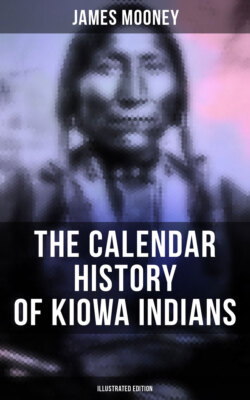Читать книгу The Calendar History of Kiowa Indians (Illustrated Edition) - James Mooney - Страница 17
Linguistic Affinity
ОглавлениеPhoto by Soule, about 1870.
Fig. 43—Zépko-eétte or Big-bow.
The Gâ´igwŭ´ or Kiowa, although originating in the far north, have been known for the last sixty years as one of the principal and most predatory tribes of the southern plains. Their linguistic affinity is still uncertain, the language apparently having no connection with that of any other tribe. This uncertainty, however, is due largely to the paucity of the linguistic material thus far collected from them, and to the fact that philologists have made the comparison with the languages of the southern tribes, with whom the Kiowa were found most closely associated, rather than with that of tribes nearer the Canadian border, whence they have drifted to the south. Another thing which serves to render comparison difficult is the fact that the Kiowa have the custom of dropping from the language any word which suggests the name of a person recently deceased, and substituting for the tabooed word another which will convey the same idea. The old word may be restored after a term of years, but it frequently happens that the new one keeps its place and the original word is entirely forgotten. The change is a new combination of existing roots, or a new use of an existing word, rather than the deliberate invention of a new word, although in some instances words seem to be borrowed for this purpose from existing languages. The same custom exists to a limited degree among the Comanche, who may have adopted it in consequence of their association with the Kiowa, and perhaps among other tribes. With the Kiowa it is carried to such an extent that old men sometimes remember as many as three names which have been used in chronologic succession for the same object. Further linguistic investigation may result in establishing their affinity with the Athapascan, northern Shoshonean, or Salishan tribes.
